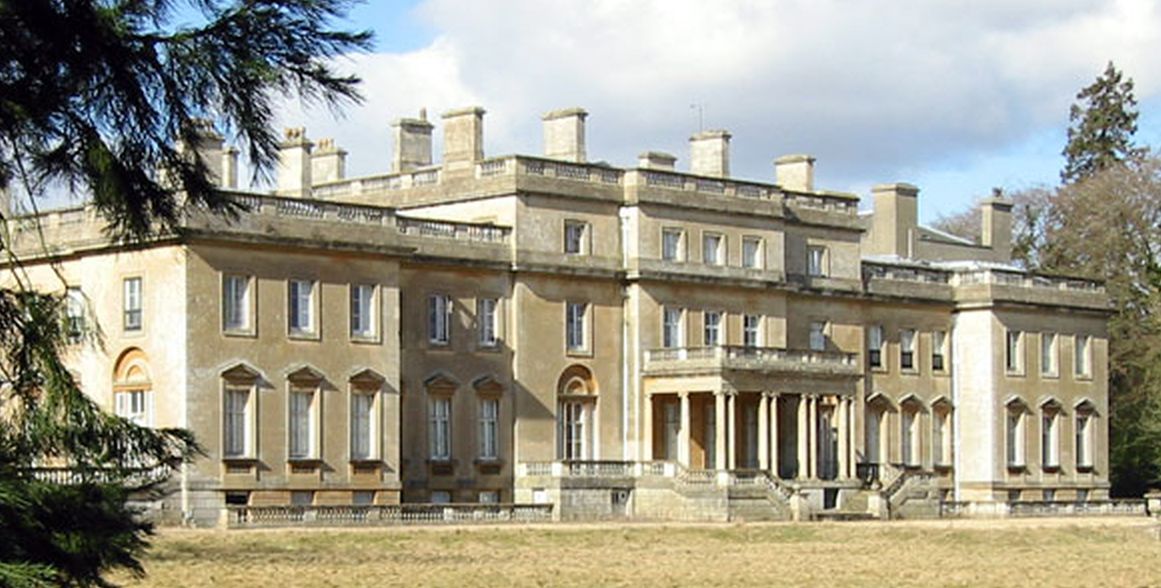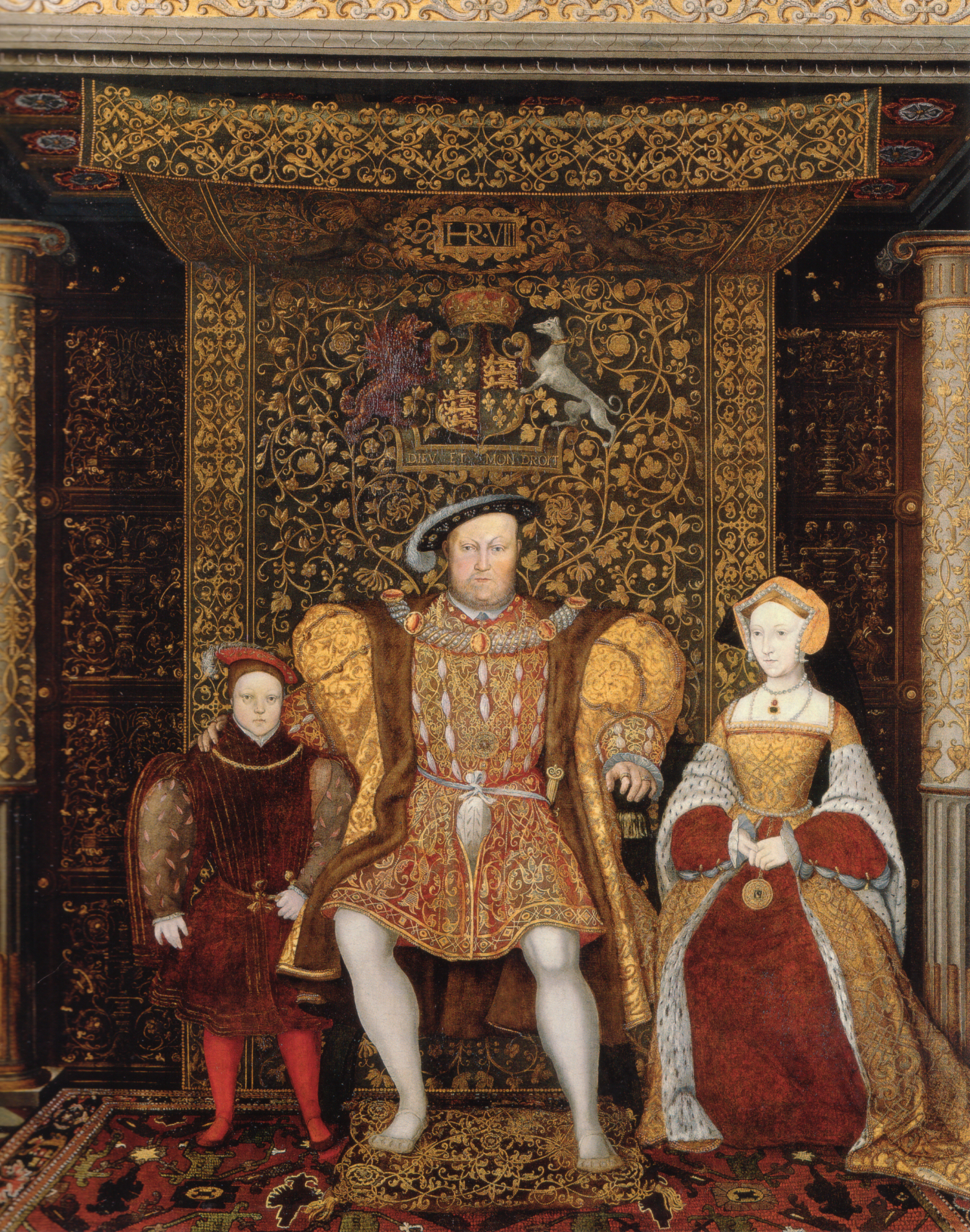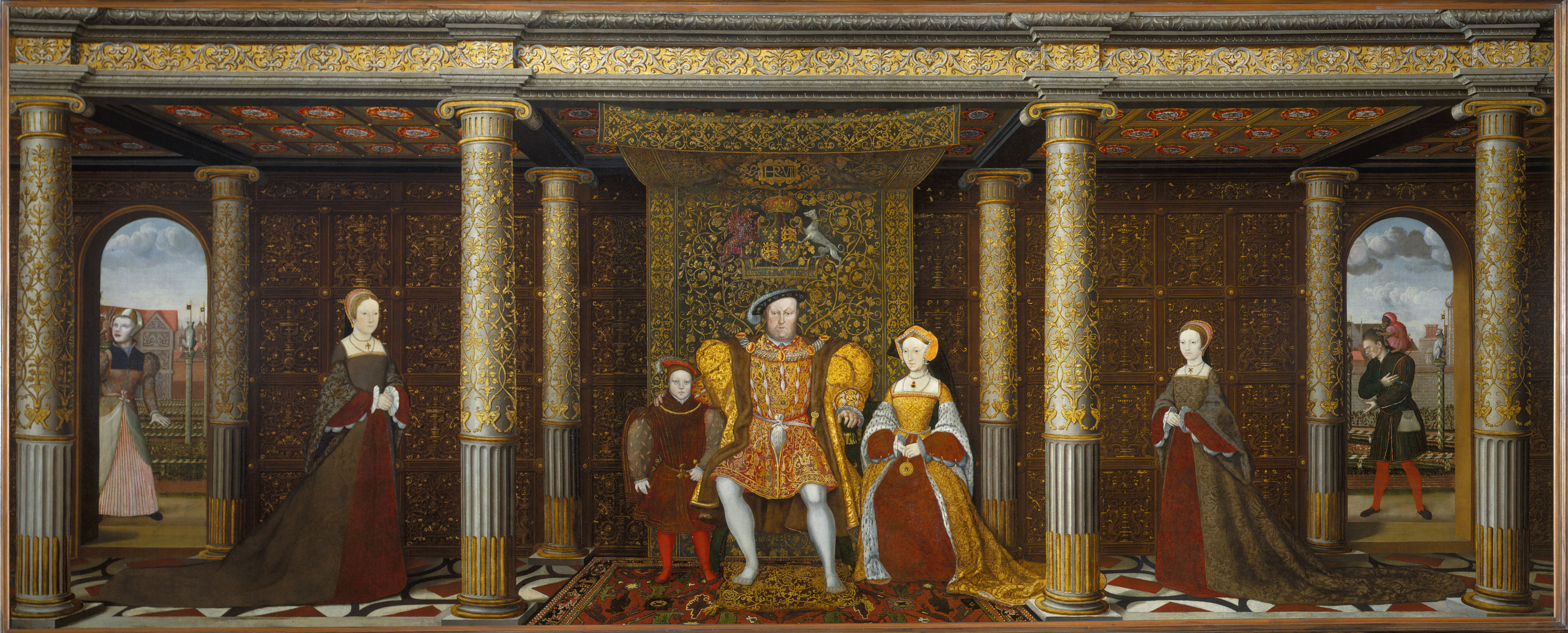|
Wulfhall
Wulfhall or Wolfhall is an early 17th-century manor house in Burbage parish, Wiltshire, England. It is north-east of Burbage village, and about south-east of Marlborough. A previous manor house on the same site, at that time in the parish of Great Bedwyn, was the seat of the Seymour family, a member of which, Jane Seymour, was queen to King Henry VIII. Late medieval and Tudor manor house The medieval manor house was probably a timber framed double courtyard house, incorporating two towers (demolished 1569), a long gallery, a chapel, and several other rooms. It was built in the early 1530s with financial assistance from Thomas Cromwell and Henry VIII. The Seymours reached the peak of their influence in the 16th century, when Jane Seymour became the third wife of King Henry VIII. Her son became Edward VI and ruled England from 1547 to 1553. At the beginning of Edward's reign, he was nine years old and his eldest uncle, Edward Seymour, 1st Duke of Somerset, was Lord ... [...More Info...] [...Related Items...] OR: [Wikipedia] [Google] [Baidu] |
Wolfhall Farm - Geograph
Wulfhall or Wolfhall is an early 17th-century manor house in Burbage parish, Wiltshire, England. It is north-east of Burbage village, and about south-east of Marlborough. A previous manor house on the same site, at that time in the parish of Great Bedwyn, was the seat of the Seymour family, a member of which, Jane Seymour, was queen to King Henry VIII. Late medieval and Tudor manor house The medieval manor house was probably a timber framed double courtyard house, incorporating two towers (demolished 1569), a long gallery, a chapel, and several other rooms. It was built in the early 1530s with financial assistance from Thomas Cromwell and Henry VIII. The Seymours reached the peak of their influence in the 16th century, when Jane Seymour became the third wife of King Henry VIII. Her son became Edward VI and ruled England from 1547 to 1553. At the beginning of Edward's reign, he was nine years old and his eldest uncle, Edward Seymour, 1st Duke of Somerset, was Lord High Prote ... [...More Info...] [...Related Items...] OR: [Wikipedia] [Google] [Baidu] |
Seymour Family
Seymour, Semel or St. Maur, is the name of an English family in which several titles of nobility have from time to time been created, and of which the Duke of Somerset is the head. Origins The family was settled in Monmouthshire in the 13th century. The original form of the name, which was resumed by the dukes of Somerset from early in the 19th century to 1923, seems to have been St. Maur, of which William Camden says that Seymour was a later corruption. It appears that about the year 1240 Gilbert Marshal, Earl of Pembroke, assisted William St. Maur to wrest a place called Woundy (now Undy), near Caldicot in Monmouthshire, from the Welsh. Woundy and Penhow, at the latter of which he made his residence, were the property of Sir Richard St. Maur at the end of the 13th century, but they were lost by the family through the marriage of Sir Richard's great-great-granddaughter, the only child of John St. Maur, who died in 1359. John St. Maur's younger brother Roger married Cecily de B ... [...More Info...] [...Related Items...] OR: [Wikipedia] [Google] [Baidu] |
Tottenham House
Tottenham House is a large Grade I listed English country house in the parish of Great Bedwyn, Wiltshire, about five miles southeast of the town of Marlborough. It is separated from the town by Savernake Forest, which is part of the Tottenham Park estate. The site of the house was part of the much larger Savernake Forest, and in the Middle Ages was controlled by heads of the Esturmy family. In the 15th century, the land passed by marriage to the House of Seymour of nearby Wulfhall, about one mile to the south. The original house was probably built in about 1575 by Edward Seymour, 1st Earl of Hertford, a nephew of Queen Jane Seymour, when it was known as Totnam Lodge. The present house incorporates parts of the earlier houses on the site built by the Seymours. In 1675, the estate passed to Lady Elizabeth Seymour, who married Thomas Bruce, 2nd Earl of Ailesbury, thus bringing the house into the Bruce family. In 1721, Elizabeth Seymour's son and heir, Charles Bruce, 3rd Earl of ... [...More Info...] [...Related Items...] OR: [Wikipedia] [Google] [Baidu] |
Wolf Hall
''Wolf Hall'' is a 2009 historical novel by English author Hilary Mantel, published by Fourth Estate, named after the Seymour family's seat of Wolfhall, or Wulfhall, in Wiltshire. Set in the period from 1500 to 1535, ''Wolf Hall'' is a sympathetic fictionalised biography documenting the rapid rise to power of Thomas Cromwell in the court of Henry VIII through to the death of Sir Thomas More. The novel won both the Booker Prize and the National Book Critics Circle Award. In 2012, ''The Observer'' named it as one of "The 10 best historical novels". The book is the first in a trilogy; the sequel '' Bring Up the Bodies'' was published in 2012. The last book in the trilogy is '' The Mirror and the Light'' (2020), which covers the last four years of Cromwell's life. Summary In 1500, Thomas Cromwell, a young boy roughly 15 years of age, runs away from home because his abusive father nearly beats him to death. He decides to seek his fortune in France as a soldier. By 1 ... [...More Info...] [...Related Items...] OR: [Wikipedia] [Google] [Baidu] |
Thomas Seymour, 1st Baron Seymour Of Sudeley
Thomas Seymour, 1st Baron Seymour of Sudeley, KG, PC (20 March 1549) was a brother of Jane Seymour, the third wife of King Henry VIII. With his brother, Edward Seymour, 1st Duke of Somerset and Lord Protector of England, he vied for control of their nephew, the young King Edward VI (). In 1547 Seymour became the fourth husband of Catherine Parr, who had been the sixth and last wife and queen of Henry VIII. During his marriage to Catherine Parr, Seymour involved the future Queen Elizabeth I (then 14 years old), who resided in his household, in flirtatious and possibly sexual behaviour. Family Thomas Seymour was the son of Sir John Seymour and Margaret Wentworth. He was the younger brother of Edward Seymour, 1st Duke of Somerset (1500–1552). He grew up at Wulfhall, the Seymour family home in Wiltshire. The Seymours were a family of country gentry, who, like most holders of manorial rights, traced their ancestry to a Norman origin. Henry VIII and his second wife, Anne Bol ... [...More Info...] [...Related Items...] OR: [Wikipedia] [Google] [Baidu] |
Wives Of Henry VIII
In common parlance, the wives of Henry VIII were the six queens consort of King Henry VIII of England between 1509 and his death in 1547. In legal terms, Henry had only three wives, because three of his marriages were annulled by the Church of England. However, he was never granted an annulment by the Pope, as he desired, for Catherine of Aragon, his first wife. Annulments declare that a true marriage never took place, unlike a divorce, in which a married couple end their union. Along with his six wives, Henry took several mistresses. Overview English historian and House of Tudor expert David Starkey describes Henry VIII as a husband:What is extraordinary is that in the beginning of Henry's marriages, he was usually a very good husband. He was very tender to them, research shows that he addressed some of his wives as "sweetheart." He was a good lover, he was very generous: the wives were given huge settlements of land and jewels. He was immensely considerate when they were preg ... [...More Info...] [...Related Items...] OR: [Wikipedia] [Google] [Baidu] |
Jane Seymour
Jane Seymour (c. 150824 October 1537) was Queen of England as the third wife of King Henry VIII of England from their marriage on 30 May 1536 until her death the next year. She became queen following the execution of Henry's second wife, Anne Boleyn. She died of postnatal complications less than two weeks after the birth of her only child, the future King Edward VI. She was the only wife of Henry to receive a queen's funeral or to be buried beside him in St George's Chapel, Windsor Castle. Early life Jane, the daughter of Sir John Seymour and Margery Wentworth, was most likely born at Wulfhall, Wiltshire, although West Bower Manor in Somerset has also been suggested. Her birth date is not recorded; various accounts use anywhere from 1504 to 1509, but it is generally estimated around 1508. Through her maternal grandfather, she was a descendant of King Edward III's son Lionel of Antwerp, 1st Duke of Clarence. Because of this, she and King Henry VIII were fifth cousins. She ... [...More Info...] [...Related Items...] OR: [Wikipedia] [Google] [Baidu] |
John Britton (antiquary)
John Britton (7 July 1771 – 1 January 1857) was an English antiquary, topographer, author and editor. He was a prolific populariser of the work of others, rather than an undertaker of original research. He is remembered as co-author (mainly in association with his friend Edward Wedlake Brayley) of nine volumes in the series ''The Beauties of England and Wales'' (1801–1814); and as sole author of the ''Architectural Antiquities of Great Britain'' (9 vols, 1805–1814) and ''Cathedral Antiquities of England'' (14 vols, 1814–1835). Early life Britton was born on 7 July 1771 at Kington St. Michael, near Chippenham, Wiltshire. His parents were in humble circumstances, and he was left an orphan at an early age. At sixteen he went to London and was apprenticed to a wine merchant. Prevented by ill-health from serving his full term, he found himself adrift in the world, without money or friends. In his fight with poverty he was put to strange shifts, becoming cellarman at a tavern ... [...More Info...] [...Related Items...] OR: [Wikipedia] [Google] [Baidu] |
Treason
Treason is the crime of attacking a state authority to which one owes allegiance. This typically includes acts such as participating in a war against one's native country, attempting to overthrow its government, spying on its military, its diplomats, or its secret services for a hostile and foreign power, or attempting to kill its head of state. A person who commits treason is known in law as a traitor. Historically, in common law countries, treason also covered the murder of specific social superiors, such as the murder of a husband by his wife or that of a master by his servant. Treason (i.e. disloyalty) against one's monarch was known as ''high treason'' and treason against a lesser superior was '' petty treason''. As jurisdictions around the world abolished petty treason, "treason" came to refer to what was historically known as high treason. At times, the term ''traitor'' has been used as a political epithet, regardless of any verifiable treasonable action. In a civil war o ... [...More Info...] [...Related Items...] OR: [Wikipedia] [Google] [Baidu] |
Anne Boleyn
Anne Boleyn (; 1501 or 1507 – 19 May 1536) was Queen of England from 1533 to 1536, as the second wife of King Henry VIII. The circumstances of her marriage and of her execution by beheading for treason and other charges made her a key figure in the political and religious upheaval that marked the start of the English Reformation. Anne was the daughter of Thomas Boleyn, 1st Earl of Wiltshire, and his wife, Lady Elizabeth Howard, and was educated in the Netherlands and France, largely as a maid of honour to Queen Claude of France. Anne returned to England in early 1522, to marry her Irish cousin James Butler, 9th Earl of Ormond; the marriage plans were broken off, and instead, she secured a post at court as maid of honour to Henry VIII's wife, Catherine of Aragon. Early in 1523, Anne was secretly betrothed to Henry Percy, son of Henry Percy, 5th Earl of Northumberland, but the betrothal was broken off when the Earl refused to support their engagement. Cardinal Tho ... [...More Info...] [...Related Items...] OR: [Wikipedia] [Google] [Baidu] |
Manor House
A manor house was historically the main residence of the lord of the manor. The house formed the administrative centre of a manor in the European feudal system; within its great hall were held the lord's manorial courts, communal meals with manorial tenants and great banquets. The term is today loosely applied to various country houses, frequently dating from the Late Middle Ages, which formerly housed the landed gentry. Manor houses were sometimes fortified, albeit not as fortified as castles, and were intended more for show than for defencibility. They existed in most European countries where feudalism was present. Function The lord of the manor may have held several properties within a county or, for example in the case of a feudal baron, spread across a kingdom, which he occupied only on occasional visits. Even so, the business of the manor was directed and controlled by regular manorial courts, which appointed manorial officials such as the bailiff, granted copyhol ... [...More Info...] [...Related Items...] OR: [Wikipedia] [Google] [Baidu] |
Whitehall Palace
The Palace of Whitehall (also spelt White Hall) at Westminster was the main residence of the English monarchs from 1530 until 1698, when most of its structures, except notably Inigo Jones's Banqueting House of 1622, were destroyed by fire. Henry VIII moved the royal residence to White Hall after the old royal apartments at the nearby Palace of Westminster were themselves destroyed by fire. Although the Whitehall palace has not survived, the area where it was located is still called Whitehall and has remained a centre of government. White Hall was at one time the largest palace in Europe, with more than 1,500 rooms, overtaking the Vatican, before itself being overtaken by the expanding Palace of Versailles, which was to reach 2,400 rooms. The palace gives its name, Whitehall, to the street located on the site on which many of the current administrative buildings of the present-day British government are situated, and hence metonymically to the central government itse ... [...More Info...] [...Related Items...] OR: [Wikipedia] [Google] [Baidu] |






.jpg)

.png)

